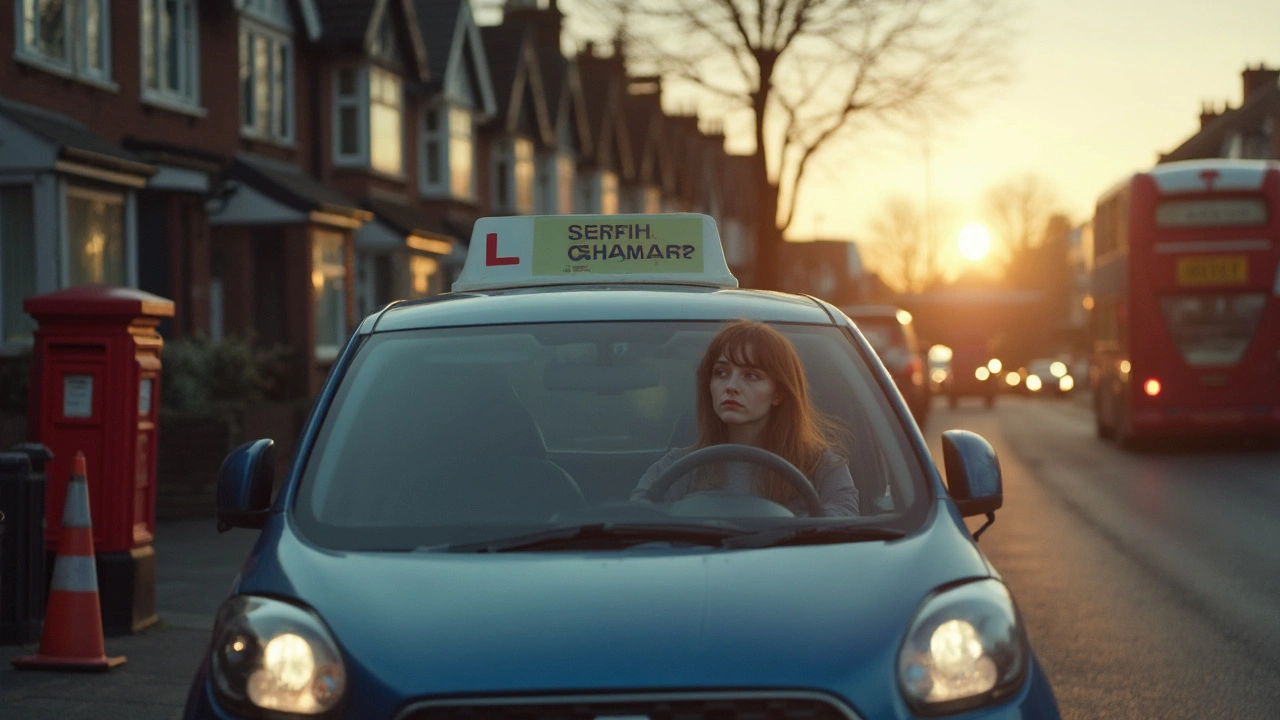Picture this: it’s April, and your mates are making summer road trip plans, but you still don’t have a licence. Regular driving lessons drag on for months, and waiting lists seem endless. That’s where an intensive driving course slams into view. It's built for people who need their licence fast, without endless weekly lessons spread over half a year.
An intensive course packs all the learning you'll need–practicals, theory revision, basics, everything—into a tight bundle. Instead of one lesson a week, you hit the road for several hours every day, usually over a week or two. For loads of folks, this is the shortcut that takes them from zero to passing in what feels like no time at all.
The idea isn’t new, but more people are catching onto it, especially now that everyone’s after quick results. You’ll find intensive courses all over the UK, and there are options whether you’re a total beginner or you’ve failed a test and just need some polishing before the next go.
- What Is an Intensive Driving Course?
- How Are Intensive Courses Structured?
- Who Should Consider an Intensive Course?
- Tips for Making the Most of Your Intensive Course
What Is an Intensive Driving Course?
If you’ve ever wished you could just learn to drive quickly and get on with life, then a intensive driving course is probably right up your alley. Simply put, it’s a way to cram all the driving lessons you’d usually spread over months into just a few days or weeks. Instead of doing your one-hour lesson each week and slowly grinding through the syllabus, you’ll be on the road every day—sometimes for five hours or more per session.
Most intensive driving course packages offer somewhere between 10 to 40 hours of driving, depending on your experience. If you’re a newbie, go for the higher number. Already failed a test? A shorter booster course usually does the trick.
These aren’t just rough-and-ready courses thrown together. Many top UK driving schools run them—names like RED, AA, and BSM are all in the game. They even offer options where you can tack on your practical test right at the end, so you don’t waste time waiting for a slot once you finish the lessons.
- Lessons are usually 3-5 hours a day, sometimes more for the truly impatient.
- You usually get paired with one instructor, which feels less like starting over every time.
- Flexible scheduling—some schools even do weekends if you need it.
Here’s a quick comparison to give you a clearer idea:
| Type | Duration | Timeframe | Cost |
|---|---|---|---|
| Regular Lessons | 1-2 hours/week | 3-6 months | £1200-£1600 |
| Intensive Driving Course | 3-5 hours/day | 1-3 weeks | £1000-£1500 |
With an intensive driving course, you won’t lose what you learnt in last week’s lesson because your brain is right in the zone, every single day. This style is perfect if you’ve got a deadline, like a new job, uni starting soon, or just want to avoid dragging things out forever.
How Are Intensive Courses Structured?
Most people imagine a intensive driving course as non-stop lessons from dawn to dusk. The truth is, things are way more organized (and less brutal) than that. You’re typically looking at anywhere from 10 to 40 hours of driving packed into a few days, depending on how much experience you already have. Some courses go for the full week, while others might have you behind the wheel solid for three or four days. A decent provider will fit the pace to you, so you don’t just get dumped in the deep end.
Here’s the basic layout most intensive courses follow:
- Day 1-2: You cover the basics — clutch control, steering, gear changes, and getting comfy with the car. Beginners will spend more time here, but if you’ve driven before, you’ll fly past this part.
- Middle Days: Practical stuff. Loads of practice on junctions, roundabouts, parallel parking, and real road scenarios — not just empty car parks. Your instructor will throw common test routes at you, too.
- Last Day(s): Mock tests and polishing up weak spots. Most providers arrange your test right at the end, so the stuff you’ve learned is fresh.
Most intensive driving courses are one-on-one, not group lessons. Some places offer shared courses, but let’s be honest, solo usually works better if you want to blitz through things at your own speed.
It’s worth knowing most courses include theory test training if you haven’t passed that part — some even bundle in the actual theory or practical test fee. Always double-check what’s in the deal.
If you’re wondering what the weekly breakdown might look like in numbers, here’s a sample timetable for a 25-hour intensive:
| Day | Hours | Main Focus |
|---|---|---|
| Monday | 5 | Basics & Controls |
| Tuesday | 5 | Junctions & Traffic |
| Wednesday | 5 | Manoeuvres & Parking |
| Thursday | 5 | Test Routes, Motorways |
| Friday | 5 | Mock Test & Final Practice |
The best part? You choose the intensity. Some people handle 5-hour days, others need more breaks. That’s why the test is nearly always booked for the end, so you get on the road while it’s all still second nature.

Who Should Consider an Intensive Course?
If you’re the type who wants things done quickly, an intensive driving course might be the perfect fit. These courses suit people with all kinds of backgrounds, but certain situations really make them a game-changer.
Here’s who usually gets the most out of an intensive course:
- Total beginners who want to learn all at once instead of dragging it out over months.
- Folks who have a test coming up soon—maybe you’ve booked a practical and now the pressure’s on to get ready fast.
- People who’ve failed their test and just need to sharpen up on a few things before another shot.
- Students on a break, anyone between jobs, or those who have a window of free time and want to get licensed before life gets busy again.
There’s a definite trend—lots of young adults and university students pick an intensive driving course because it fits with hectic schedules. A 2024 survey found that almost 40% of under-25s prefer fast-track driving lessons if given the option. The main reason: speed and flexibility. Employers and uni schedules don’t wait around, so neither do they.
| Type of Learner | Why Choose Intensive? |
|---|---|
| Beginners | Get up to speed in a week or two |
| Failed Test-takers | Brush up skills, try again fast |
| Busy Professionals/Students | Fit learning into a tight schedule |
| Relocating Drivers | Need a licence before moving or new job starts |
But not everyone’s cut out for the fast lane. If you learn best when there’s time to let things sink in, or you get overwhelmed easily, a traditional course with weekly lessons might be less stressful. Still, for anyone who’s determined and can focus for a week or two, an intensive approach gets you ready—and licensed—fast.
Tips for Making the Most of Your Intensive Course
Jumping into an intensive driving course can feel like being chucked in at the deep end, but you can make it way easier if you prep smartly. Here’s how to squeeze the most out of those jam-packed days and boost your chances of passing.
- Sort out your theory test early. You can’t book your practical test without passing theory, so knock it out before your course or during the first couple days. Apps like Theory Test Pro are legit and super helpful for practice.
- Clear your schedule. These courses mean long days, sometimes back-to-back sessions. Try not to book anything else, like work or big social plans, because you’ll need your head in the game and energy levels high.
- Stay rested. Fatigue kills concentration—and quick reactions. Get a good night’s sleep every night of your course, and watch the caffeine. A strong start in the morning beats running on fumes.
- Use downtime for revision. The stuff they throw at you comes thick and fast. Spend lunch or the evenings going over notes—or watch a few mock drives on YouTube. It helps more than you’d think!
- Ask loads of questions. Don’t be shy, even if something feels obvious. Instructors do this for a living, and your silly question might actually save you from a fail on test day.
- Practice in different conditions. Ask if possible to drive at different times—like in rain, at night, or through rush hour. The real world isn’t always perfect, and the more practice, the better you’ll feel come test day.
- Keep your nerves in check. Some test centres see higher pass rates than others, but confidence and calm make a huge difference. Try some breathing techniques or simple mindfulness tricks to stay chill before your exam.
Here’s a quick look at pass rates in the UK depending on course type, according to figures published by select driving schools in 2024:
| Course Type | Average Pass Rate (%) |
|---|---|
| Traditional Weekly Lessons | 45 |
| Intensive Driving Course | 57 |
If you’re after fast results, remember: showing up prepared, rested, and open to feedback is half the battle. A fast-track driving approach works best when you bring focus and take it seriously. Good luck—you could be on the road before you know it.

